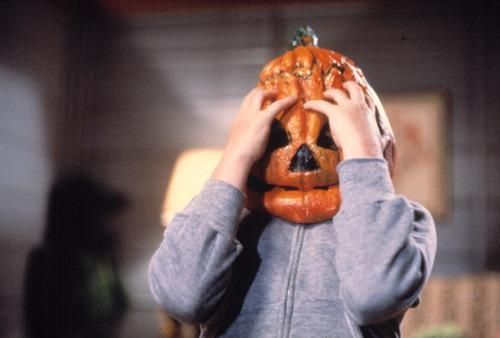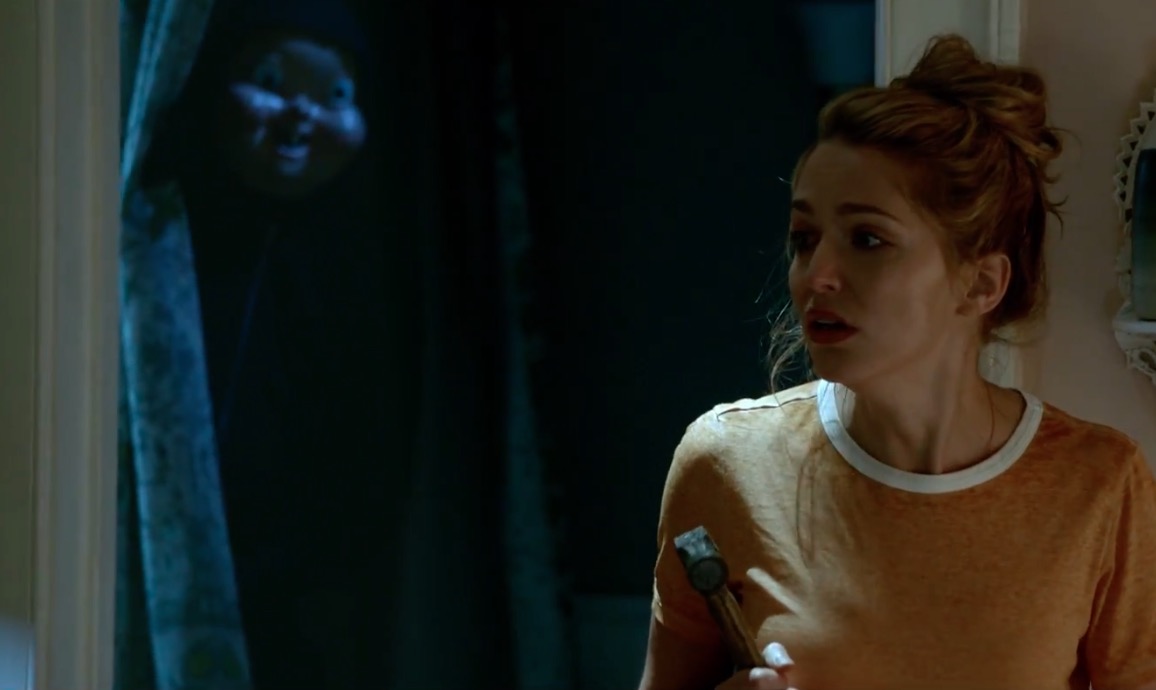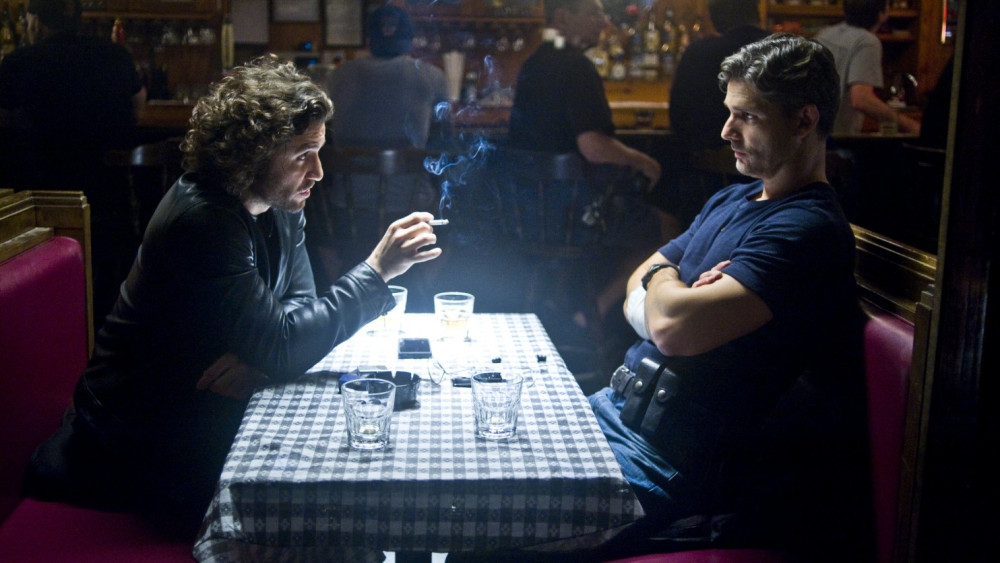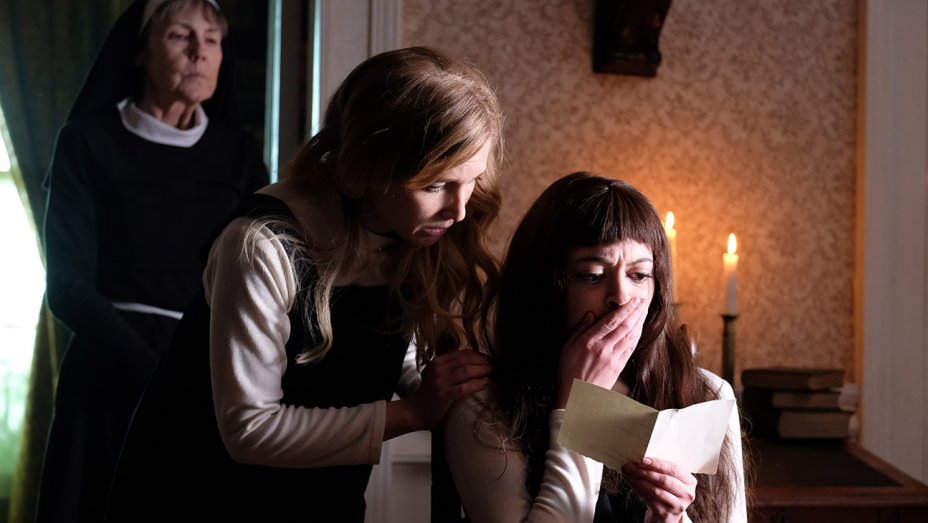6. Halloween III: Season of the Witch

Now, “Halloween III: Season of the Witch” is a good movie. Only it isn’t a horror film, but rather a successful sci-fi cult film. To the disdain of the franchise fans, Michael Myers doesn’t feature in the film. It doesn’t use a traditional slasher narrative; “Halloween III” focuses on the assuming occult practice of the Celtic festival Samhain. John Carpenter wished to make the Halloween series an anthological that will be connected by Halloween night, and the departure of this entry from the previous ones is an initial effort to execute this idea.
The story of “Halloween III” wants to replace the kids with robots, but why? It is not answered. An anti-capitalist message is also present in the film, but not so prominent like Carpenter’s “They Live.” “Halloween III” is a deliberate kitsch of far better films like “Invasion of the Body Snatchers” and “They Live” and is not meant to amplify its horror quotient, but to show interest in the politics of the corporate world.
7. Ouija

Why does the ghost in “Ouija” insist on sewing the mouth of its victims? In all probability, it was conceived to create an interesting eccentric ghost who will scare the hell out of the audience. But the intended effect is lost in the final film, and the machinations of this otherworldly ghost are a laugh riot.
The writing is a mess here, like most of the mainstream commercial horror films; the logic doesn’t make sense and the viewer has to suspend every ounce of disbelief to be able to enjoy this movie. The very existence of a Ouija board is beyond belief and the teenagers’ curiosity with this antique is extraordinarily unreal.
“Ouija” wants us to feel fear when the message “hi friend” is written in different places and on the belongings of these teenagers. But would a millennial kid really think over this? They’d probably pass it off as some kind of vandalism and try to uncover the suspect. If the first simple task of logic establishment is not complete, it is increasingly difficult to make a scary film. “Ouija” is an ultimate PG-13 horror where everything is painfully stupid and toned down for a necessary censor rating from the board. There is a ghost in the film named “DZ” and surely the viewers will feel dizzy.
8. Happy Death Day

“Happy Death Day” tried to double the fun by mixing the slasher genre with a comedy-drama a la “Groundhog Day” and it only succeeds at delivering the comedy right. Waking up in the same bed every day and getting killed at the end of the day is a scary thought and it looks great on paper, but the existentialist horror certainly can’t project a chilling atmosphere on the screen.
The film tried to use the same meta-slasher trope to create laughs, but for the film to be effective, it had to be double scary or double comedic. But “Happy Death Day” can’t make up its mind and targets the film for the average teenage audience with the intended result of low ambition.
Some films suffer for their lofty ambitions, but “Happy Death Day” fails because the lazy filmmakers can’t do comedy and horror at the same time, or any one of these, either. It also has scarce logic like the typical bad slasher film, like when there is a staircase right in front of a character, and she waits for the elevator to come in the time of an emergency.
9. Deliver Us from Evil

The number of “The Exorcist”-inspired films is uncountable. Scott Derrickson’s “Deliver Us from Evil” takes some major notes from “The Exorcist” and mixes them with several other horror film plots to make an incoherent film that has many unimaginative jump scares. Derrickson has successfully built the creepy atmosphere with the help of a worn-out cave and despondent lighting, but he doesn’t have good enough material to back it up.
The film has an excellent cast but they are far outweighed by the terrible material they had to work with. Derrickson jumbled up the pacing of the film with some silly, unnecessary comic relief moments. “Deliver Us from Evil” had great potential with the story with an Iraq connection to it, but the film loses all avenue to use this supposedly new film trope to its advantage.
It also uses The Doors for the soundtrack, which hinted on the possibility of some psychological insanity that the priest tried to pass as supernatural horror with demons that are a mixture of primary and secondary evil. “Deliver Us from Evil” starts with a good premise and atmosphere to give us a modern-day “The Exorcist,” but soon wore out all its quality and techniques.
10. St. Agatha

It happens with all of the bad horror films: the director gets confused about what they want to say. The same goes for “St. Agatha,” which uses the typical nun and convent setting but is more of a nunsploitation than a supernatural horror film.
The story confirms the thing: the root of evil in St. Agatha is no primordial evil, but human greed for power. Darren Lynn Bousman is a veteran of the “Saw” sequels and knows that gore and torture don’t always amount to thrill and terror, but he falls on this lazy path to deliver fear. “St. Agatha” is more of a thriller than a horror film and the timid cinematography doesn’t assist Bousman in creating a moody atmosphere.
The studio marketed the film as a supernatural horror, which is a big offense considering that the film is really a torture porn and not even good in that category either. The nunsploitation genre was a thing of the past and when it comes back in the modern-day setting, it needs a better story and treatment to stop the opposers.